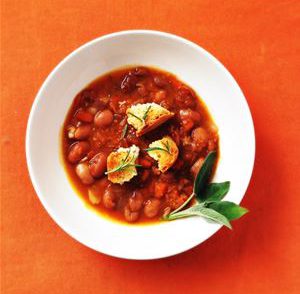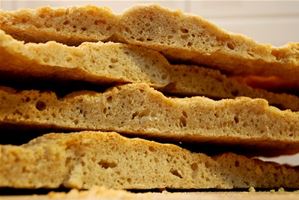My latest consulting job finds me working for a prince in a palace surrounded by olive groves and vineyards. Among horses and children, fields of green grass and gardens, I am organizing traditional Tuscan gourmet picnics, lunches and cooking classes to offer in the restaurant and wine-tasting room. I often lose myself in the maze of underground corridors leading from the modern restaurant kitchen to the old, grand kitchen of the villa-so grand, in fact, that my whole apartment would fit inside of it.
According to recent legislation in Tuscany, just about anyone can open an agriturismo simply by official declaration. While previous laws allowed agriturismi to cook and serve food only to lodgers, the new law allows them to open their doors to outside traffic, including walk-ins, and qualifies properties as agriturismi even if they have no beds.
But wait, there is a catch! Thanks to the new laws, all agriturismi must meet the benchmark for guaranteeing local products of regional origin and produced at ‘zero kilometres.’ They will even have to write the provenance of produce on the menu. Furthermore, agriturismi must use their own produce whenever possible. The agriturismo where I am consulting definitely qualifies: the prince makes fabulous Chianti Classico wines, and his olive groves produce two types of extra virgin olive oil, one of which is registered as both organic and DOP (see www.principecorsini.com).
Here, rosemary hedges and herb gardens flourish, carciofi and baccelli are making their last seasonal appearance, fagioli sgranati are just starting, and basil, tomatoes and bell peppers are flowering to fruit. This wealth is tended to by an 80-year-old contadino whose family has been employed by the Corsini family for five generations. Most days, upon arriving in the kitchen I find a rustic wire basket (likely as old as the contadino himself) laden with the plump and often crooked organic produce picked in the garden, the produce palette for the dishes of the day.
Today, I have some pane raffermo, and, in Italy, it is a sin to throw away bread. Tuscan cuisine is based on peasant food, and panzanella is just that.
Invented by necessity in tougher times by contadini, panzanella was originally simply chunks of bread (which was baked so infrequently it often needed to be regenerated) soaked in water and vinegar, drizzled with olive oil, and tossed with strips of red onion and basil leaves to make the stale chunks more appetizing. Waste not, want not!
Panzanella was originally served for breakfast and washed down with a glug of wine before going out to backbreaking work in the fields. Today, tomato and cucumber are added, sometimes even olives and anchovies. Here is my revisited recipe, enriched by toasting the bread with lashings of olive oil first, and finishing with a quail eggs, tomatoes, cucumber ribbons and basil-infused oil.
RECIPE
PANZANELLA CON OLIO AL BASILICO DELL’ORTO
(serves four)
150 g pane raffermo, day-old bread
1 red onion
2 handfuls of basil
4 ripe, red tomatoes
1 telegraph cucumber
4 quail eggs
30 ml white wine vinegar
Lashings of extra virgin olive oil
Salt and pepper
For the basil-infused olive oil:
Bring a small pot of water to boil. Wash, dry and pick the basil leaves carefully off their stems, setting aside four of the prettiest leaves for a garnish. Place the rest in boiling water for 90 seconds, drain and wring out the water. With a hand mixer, blend the boiled leaves with 100ml of extra virgin olive oil, then set to drain through a muslin cloth. This is best done the day before as it is slow to drip through. The end result is a deliciously green oil tasting clearly of basil and of the quality of the oil.
For the panzanella:
Boil the quail eggs for 3 minutes. Gently remove, peel and set aside.
Cut the slices of bread into thumb-size rough cubes and toss in a bowl with extra virgin olive oil and sea salt. Spread on a sheet of foil and bake until golden and crispy.
Prepare the ribbons of cucumber with a vegetable peeler, taking strips the full length of the cucumber. Set aside as a garnish and chop the remaining cucumber into cubes the same size as the bread. Do the same with the tomato. Cut the red onion in half, then slice finely, soak in cold water for 30 minutes to remove some bitterness.
To prepare: splash the toasted bread with the wine vinegar, and sprinkle in some water to soften the bread somewhat without losing the crunch. Mix in the onion, chopped tomato and chopped cucumber, and a small amount of the basil oil. Prepare individual portions using the cucumber ribbons, quail eggs and basil leaves. Finish with lashings of basil infused extra virgin olive oil.
My wine match for this simple and fun summer salad is Birillo Vermentino IGT 2009 made on the princes estate of Tenuta Marsiliana in Maremma.







